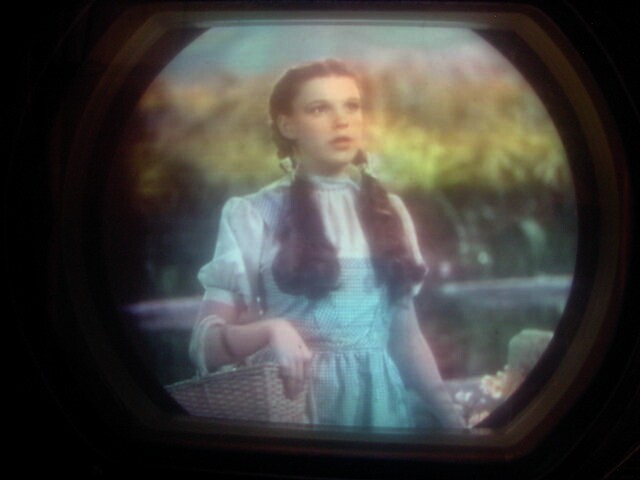Other Color Adapters
Contenders to the Color Crown. Other color adapters send the art on a different course. Colordaptor resembled the Col-R-Tel system, but Colordaptor included a luminance delay line. Colordaptor also substituted a three-phase, electronic switch (tristable) for the Col-R-Tel mechanical commutator. Systems by de Forest and Topping replaced the scanning disc with a belt. The advantage of these belt systems was that they were smaller than comparable disc systems. Belt systems could adapt large CRT pictures.
De Forest & Spectrac. De Forest's system was incompatible with NTSC color. Topping called his invention Spectrac. This elaborate color converter eliminated soldered connections inside the TV. Instead, converter signals came from a CRT socket adapter. Topping's system even worked on TV sets with narrowband IF strips. A specially equalized bandpass amplifier restored the chroma signal to its proper proportions. Both systems had drawbacks. Topping's adapter made a splash at the Consumer Electronics Show. That was its fifteen minutes of fame. Neither system went into production.
Scope Converter. Like the Spectrac color converter, the Scope converter reproduced two colors, red and cyan. Instead of using a moving belt, Spectrac fashion, Scope had a horizontal, sliding filter. In 1965, NRI schools planned to market the Scope system. But the plans never came to pass. A photo of a system mockup appeared in Radio-Electronics magazine.
Ed Reitan may still offer an partial CBS color system schematic (PDF) at... http://www.novia.net/~ereitan/cbs_tech_data.html.

Go to Page: 1 2 3 4 5 6 7 8 9 Next
